Whale watching from Brisbane, QLD takes place from June to November. As every year Humpback whales make their annual migration north. Escaping the cold waters of Antarctica for warmer, more tropical waters to birth their calves. This round trip migration can take over 10,000 km to complete.
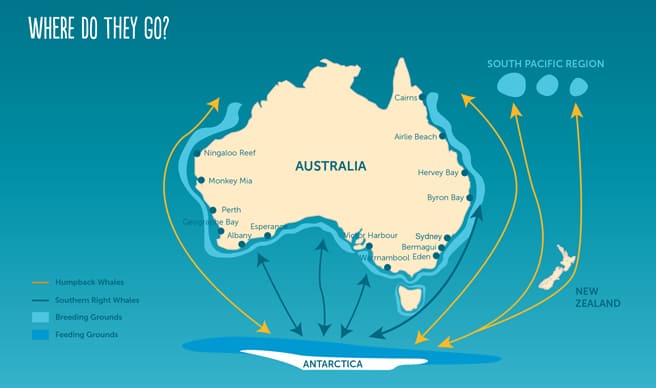
Both Australia’s East and West coasts are able to witness this beautiful journey.
Humpback whales are a baleen whale which means their teeth act like a filter. When they eat, large amounts of water are taken in. Any food is kept behind while the water is pushed back through their baleen teeth.
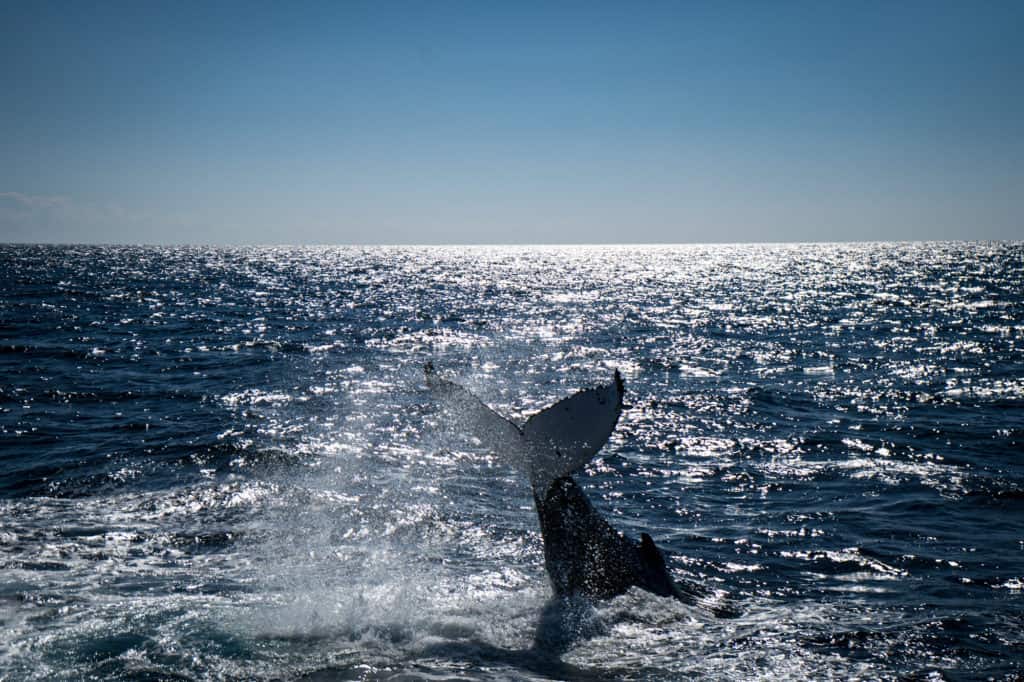
Weighing up to 40 tonnes these gentle giants need a lot of food. They eat up to 1.5 tonnes of small fish and krill a day!
Being such a generous size you can see the whales from the beach. Especially when they are breaching out of the water! But it is a wonderful experience to get up closer to them in a boat.

Here is some quick clips of the whales we saw having a whale of a time 😉 🐳
Queensland boasts several popular whale watching hot spots
– Gold Coast
– Brisbane, Moreton Bay Marine Park
– Sunshine Coast
– Hervey Bay, Australia’s Capital for whale watching
– Southern Great Barrier Reef
– Whitsundays, North Qld
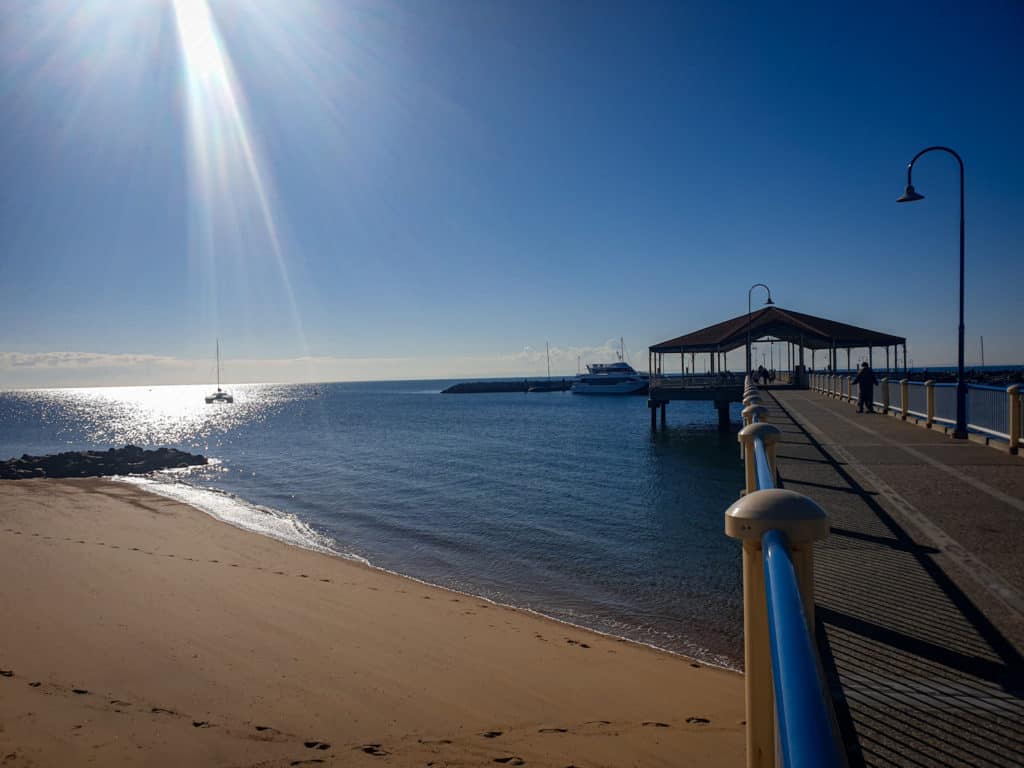
Our cruise with Brisbane Whale Watching departed from Redcliffe. Which is less than an hour drive from Brisbane CBD.

Boarding commenced from 9.15am and we departed the Jetty at 10am. It’s a nice, sunny winter’s day with flat, calm water.


Our catamaran vessel Eye Spy cruises across Moreton Bay with ease and great speed. Doesn’t take too long until we arrive at Moreton Island.

We slow down to a more scenic speed and can see Tangalooma resort as well as the Shipwrecks. Keep cruising along the left side of the Island. See the North Point Lighthouse and continue on to Flinders Reef.

From here our captain Kerry has already spotted a pod off in the distance.
It takes me awhile to see where the whales are. But their blowholes spurting out water give them away.

As we get closer can see a few fins and tails cutting through the water.

We are told to keep an eye out for the white underbellies so that you can track them under the water.

The whales seem to be having a whaley good time and were really active. We were lucky to see 30+ breaches and a quite few impressive tail slaps.

It is amazing to see these massive mammals launch themselves out of the water. To see it up close gives you an idea of the sheer power this would take.
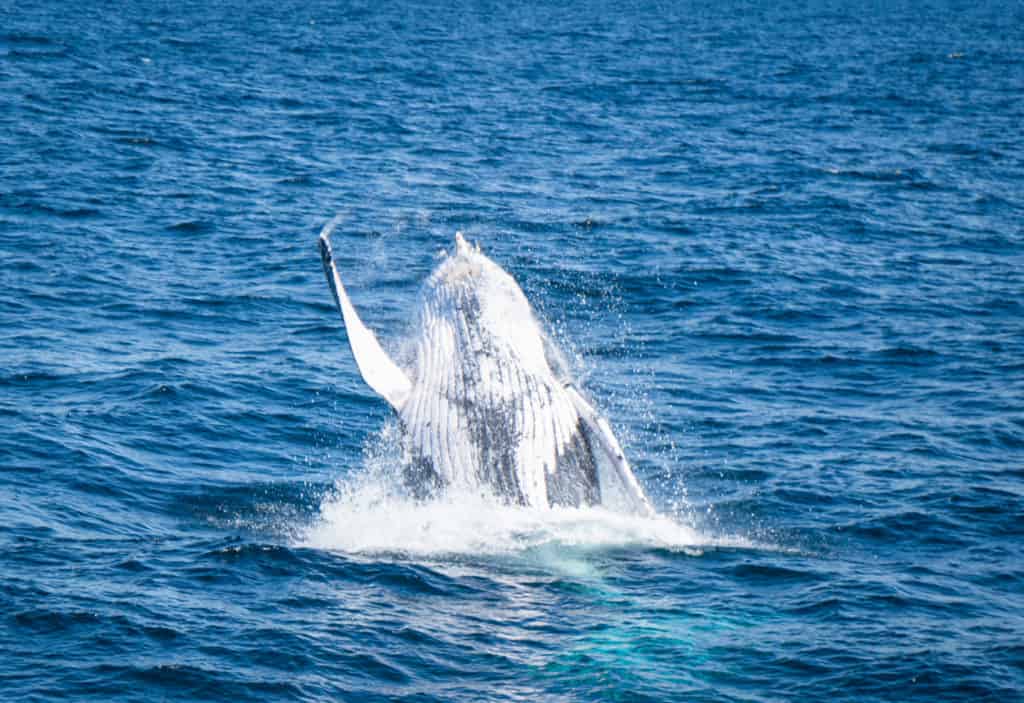
When they hit the water, the sound is like hearing the biggest belly flop take place! Not that it seems to bother them as it helps remove sea lice and barnacles.

You can identify the whales from their tail fluke. Just like our fingerprints, no two are the same.
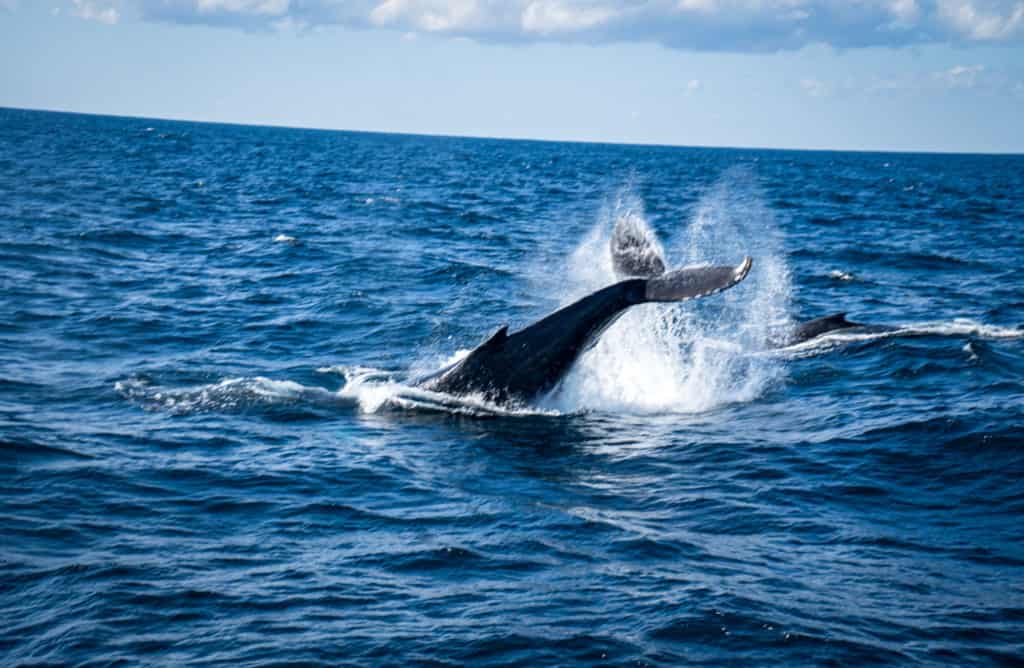
Since all commercial whaling in Australia stopped in 1978, many of the whale populations have begun to recover. Which is great news!

We thoroughly enjoyed our experience with Brisbane Whale watching. Highly recommend them, not only do they 100% guarantee sightings, a portion of your ticket goes towards whale charities 🐳✌.

If you would prefer to stay on land, Stradbroke Island’s Point lookout is a great place to see migrating whales, dolphins and turtles. For more, check out our post on Stradbroke Island 🙂

